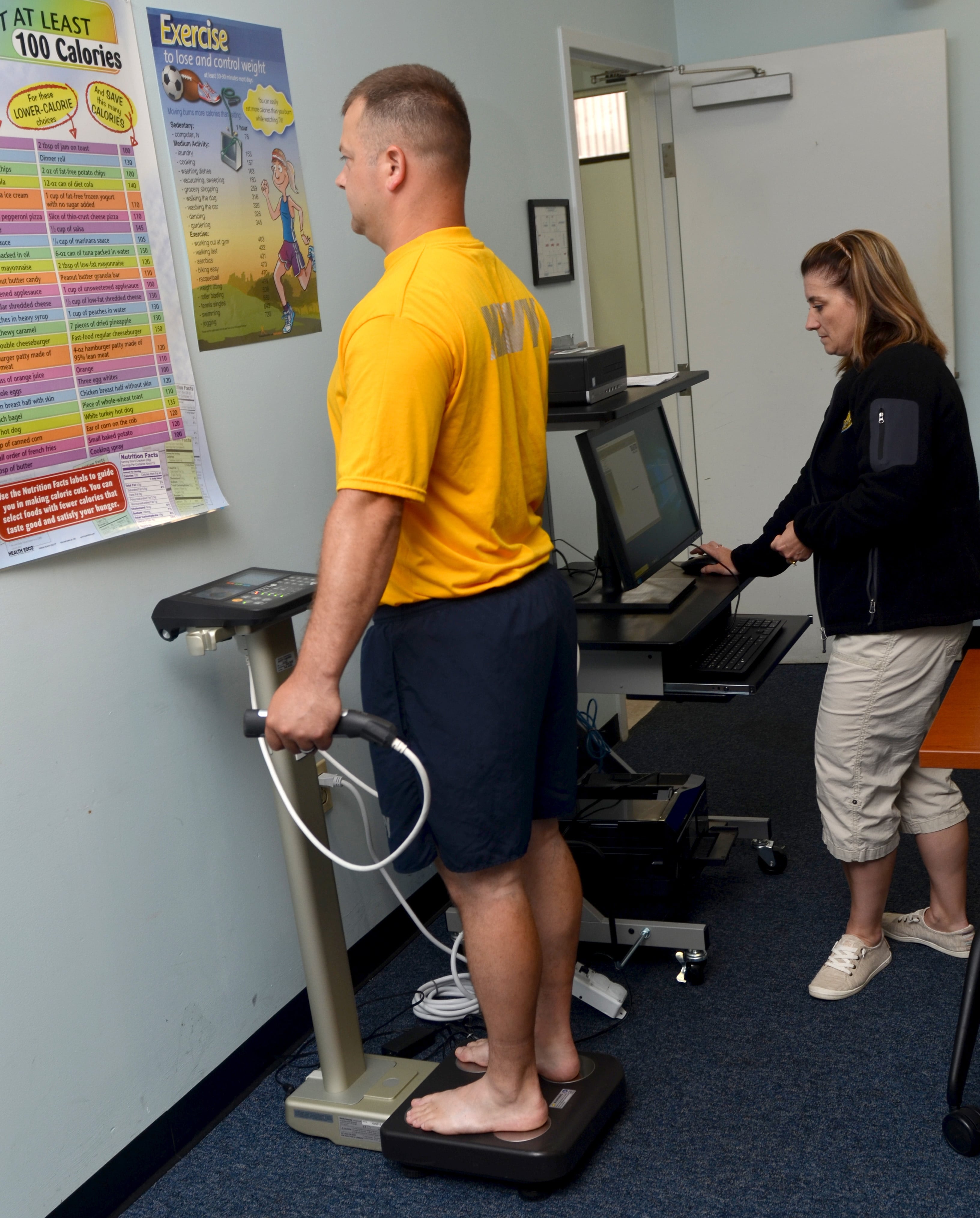The Defense Department updated its physical fitness and body composition program guidelines March 10. The changes open the door for each military branch to revamp their own policies if they so choose, a move that the services have been consistently working toward in recent years.
The latest update to DoD instruction 1308.03, which comes on the heels of ongoing studies from the Marine Corps and the Army, eliminated much of the department’s restrictive language originally featured in the program. The update generalizes its goals to allow the branches to tailor their guidelines to the needs of their service members and missions as much as possible.
“Body composition may be evaluated using either Body Fat calculations, waist-to-height ratio, abdominal circumference, height-weight screening, or any combination thereof,” the regulation now reads, as long as service members still meet certain criteria under each option.
So, if a branch decides to use a body fat calculation method, such as Bod Pod — a device that measures the weight and volume of a person to determine body density — they only have to ensure that service members remain within certain body fat percentages.
While the composition tables used by each branch are expected to be updated after the services have come up with new policies and provided feedback to the department, female servicemembers still must not have over 36 percent body fat while male servicemembers may not have more than 26 percent body fat. Additionally, no branch is allowed to set minimum body fat limits below 26 percent for women and 18 percent for men.
If a branch instead decides to rely on height-weight screening tables, the policy mandates that servicemembers must meet Body Mass Index standards no bigger than 27.5, with minimum limits not allowed to be below a BMI of 19.

As for using the taping method, which has been heavily criticized in the past, how the branches choose to tape is now up to the service, as long as the method has been scientifically proven to be effective and accurate.
Any determination of body composition that relies on abdominal or waist circumference, for example, must use evidence-backed reference indexes that have been corrected for height so as to not unfairly affect short or tall servicemembers.
According to Laurel Tingley, a Media Operations Officer for the Air Force, the branch is currently developing a plan based on the new waist-to-height ratio policy that follows 1308.03′s update. The Air Force should have the plan out later this year she said.
Physical fitness testing was also previously mandated DoD-wide with suggestions in the former version of the policy included running, sit-ups, pull-ups and other exercises. In the update, all of the language involving specific options for testing has been removed.
This means that each branch now has free-rein to test their service members’ fitness levels as they see fit, whether that still involves running or crunches or now allows for less injury-inducing options, a move the Army has tried to make in the past few years with their updated Army Combat Fitness Test.
Lt. Col. Lisa Jaster, an Army Reserve officer who said she’s struggled with body composition standards her whole career despite stellar physical fitness scores, welcomed the changes.
“I have been pushing this [policy update] from the bottom up for as long as I can remember,” Jaster told Military Times.
A “common story” Jaster cited in her response to the changes was, “being deployed to Iraq in 2018 and watching a girl pass out as she dehydrated herself in the gym with a body wrap, no water or food for 24 hours, and doing cardio hoping to pass tape. Same gym, different day, and guys were lined up to use a neck strengthening device. The muscles built help footballs players, wrestlers, and anyone wanting to pass tape, but have zero fitness value.”

Both stories, she said, are examples of the poor behaviors the current body fat standards drive and why this change has been much-needed.
The policy also specifies that testing physical fitness levels needs to happen only at least once a year, and it doesn’t dictate that the evaluation needs to be a literal test, something the the Space Force is reportedly taking in stride. The branch is hoping to lead the way into a future in which service-members are allowed to serve as long as they are job-proficient and healthy.
The newest branch plans on potentially eliminating a singular, specific annual test. Instead, they are instituting a “stoplight-like” program in which guardians’ physical fitness is regularly judged as green, yellow or red, based on a variety of factors that can be monitored and recorded daily through wearing something along the lines of a Garmin or FitBit.
“Powered by FitRankings technology, guardians will create individual profiles that connect to their wearable or app, providing in-platform fitness data for any activity and allowing data standardization,” FitRankings, which the Space Force has contracted for this goal, said in a March 14 release.
“Guardians’ wearables will provide real-time data and insights that enable guardians to track fitness goal progress, optimize programming and assess physical readiness criteria instantaneously.”
This would allow the Space Force to meet the regulation’s requirement of testing service members fitness levels at least once a year, without actually forcing them to singularly train for a specific testing event.
The updated policy also dictates that the branches should create their tests based on occupational requirements. This would mean that those in more physically demanding fields such as infantry or artillery may have different assessments than occupational specialties like intelligence or administration, although each field would have to be evaluated on a standardized level at some point in the year.
Each branch must submit a report on the previous calendar year’s physical fitness and body composition statistics for their service members, with the first report due June 1, 2022.
Rachel is a Marine Corps veteran and a master's candidate at New York University's Business & Economic Reporting program.





